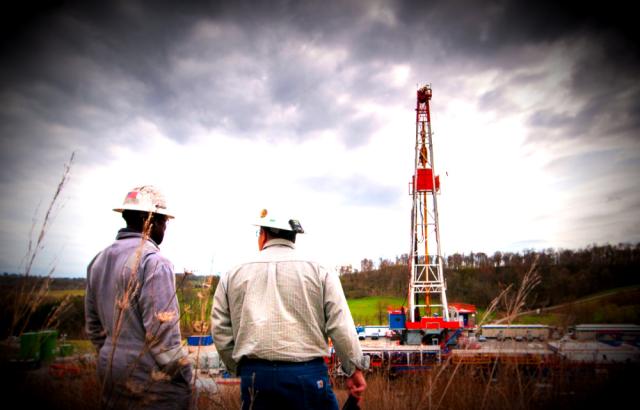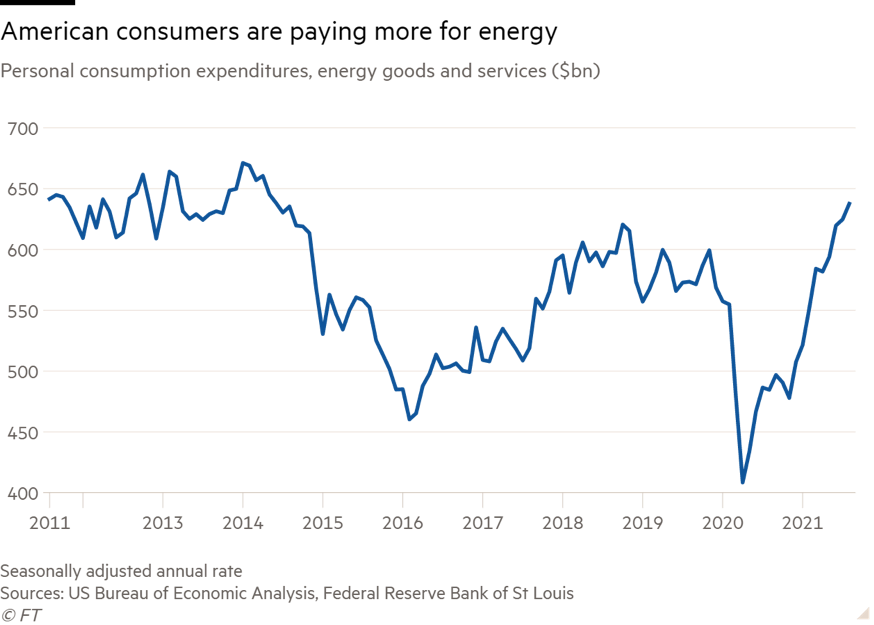
Investor pressure on oil and gas companies to be more disciplined on growth has reined in domestic oil production. (Source: Oil and Gas Investor / Hart Energy)
As anger over surging gasoline prices in America has grown, President Joe Biden’s critics have pounced. The president’s green shift has turned off the taps at America’s once gushing oil industry, they argue, fuelling higher prices and inflation.
But it is Wall Street, not Washington, that has put the clamps on growth in America’s oil patch. Investors scarred by years of cash-burning growth have called time on a debt-fuelled drilling binge that made the U.S. the world’s largest oil producer, but inflicted billions of dollars in losses on shareholders.
Still, to Biden’s industry and political critics, American drivers are paying more to fill up because the nation’s oil producers are being held back by a climate-minded presidency that has piled on taxes and regulations, deprived the industry of drilling permits and shut down pipelines.
Yet none of the actions from the White House have altered the trajectory of U.S. crude supply in the 10 months since Biden took office.
Critics, for instance, often link today’s high pump prices with president Biden’s cancellation of the Keystone XL pipeline, which would have ferried oil from Canada to the U.S. Gulf Coast. Whatever the merits of the decision, the pipeline was still years away from construction. Today’s oil price is not rising because it was scrapped.
Biden has also paused leasing of new parcels of federally-held lands for fracking. But this is not pushing up fuel prices either. Producers are sitting on thousands of permits for new wells on lands it has already leased, enough to keep drilling at a healthy clip for years. More to the point, the vast majority of U.S. shale production comes from private lands, making the issue marginal to the broader U.S. supply picture.
New taxes and regulations, meanwhile, remain largely theoretical as long as the administration’s climate agenda is tied up in Congress. The most significant new oil and gas regulatory proposal is on restricting emissions of methane, a potent greenhouse gas, which most in the industry profess to support.
Another fuzzier argument is that anti-oil rhetoric is enough to discourage investment. A similar argument was often made during the Obama administration, which was similarly critical of the industry. Yet oil and gas output soared.
Biden himself appears keen to see American oil producers pick up the pace as gasoline prices hit multiyear highs. He called on producers to pump more crude the day before heading to the COP26 climate conference in Glasgow, acknowledging the “irony” of asking for more fossil fuel amid the climate talks but arguing there was a pressing short-term need to bring down fuel prices.

Ultimately what the market is signaling and investors are demanding will be far more important to U.S. supply than who sits in the White House.
Shareholders are now demanding the influx of cash from surging prices goes back to them through increased dividends and share buybacks rather than being ploughed into new wells in Texas or North Dakota.
Even as oil demand has surged back to around pre-pandemic levels, U.S. output remains nearly 2 million bbl/d lower than 2019’s peak. Some growth is expected next year, but at a far slower pace than recent years.
The about-face has been jarring for shale executives bred on the notion that producing more and faster than your rivals was paramount. But there’s no sign of going back, especially as capital discipline has yielded a surge in profits and share prices this year.
“Investors need to have us on a short lease and I think that would be good for this sector,” Ryan Lance, CEO of ConocoPhillips, which agreed in September to spend $9.5 billion on Shell’s business in Texas’ Permian Basin, recently told analysts.
RELATED:
COP26: Oil Price Soars Even as World Turns Against Fossil Fuels
Biden’s Dilemma over Strategic Petroleum Reserve Release
For evidence of the impact of this shareholder pressure, take a look at the shale industry’s privately held oil drillers, dozens of companies from large private equity-backed operations to one-rig outfits. Growth is once again rampant among those companies as they take $80 oil as a clear signal to increase drilling—the number of rigs deployed by private firms has tripled over the past year.
The private producers are exposed to the same regulatory and political environment as their larger, publicly-held rivals. They are not under the same investor pressure to keep output in check. Crucially for oil markets, however, they are not likely to generate enough growth to reverse the oil rally.
America’s shale revolution remade global oil markets over the past decade as soaring growth made supply seem abundant. It also fed pumped up claims of American “energy dominance” in Washington. But it never made money. Now Wall Street is driving a new revolution in the shale patch that is ditching the old growth model. The effects are being felt from Americans’ pocketbooks to the halls of power.
Recommended Reading
To Dawson: EOG, SM Energy, More Aim to Push Midland Heat Map North
2024-02-22 - SM Energy joined Birch Operations, EOG Resources and Callon Petroleum in applying the newest D&C intel to areas north of Midland and Martin counties.
US Raises Crude Production Growth Forecast for 2024
2024-03-12 - U.S. crude oil production will rise by 260,000 bbl/d to 13.19 MMbbl/d this year, the EIA said in its Short-Term Energy Outlook.
Exxon Ups Mammoth Offshore Guyana Production by Another 100,000 bbl/d
2024-04-15 - Exxon Mobil, which took a final investment decision on its Whiptail development on April 12, now estimates its six offshore Guyana projects will average gross production of 1.3 MMbbl/d by 2027.
Tethys Oil Releases March Production Results
2024-04-17 - Tethys Oil said the official selling price of its Oman Export Blend oil was $78.75/bbl.
Exxon Mobil Green-lights $12.7B Whiptail Project Offshore Guyana
2024-04-12 - Exxon Mobil’s sixth development in the Stabroek Block will add 250,000 bbl/d capacity when it starts production in 2027.




